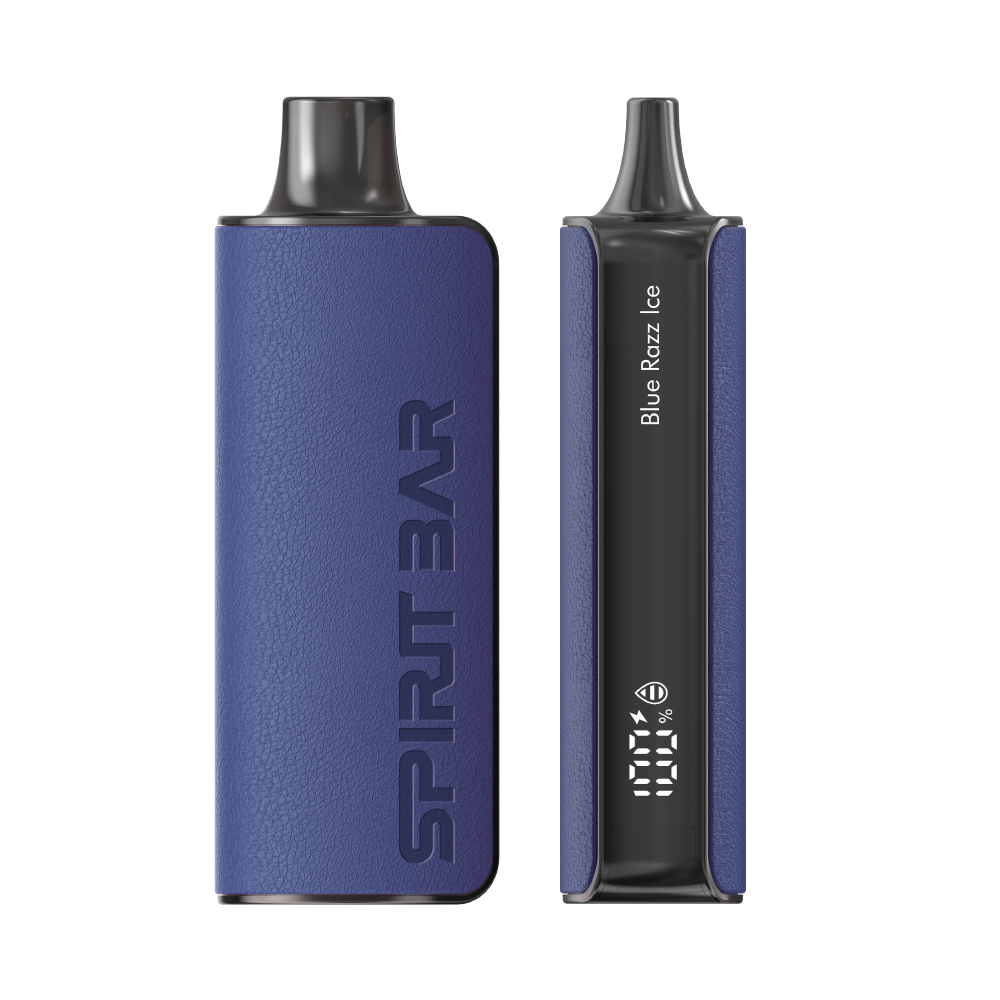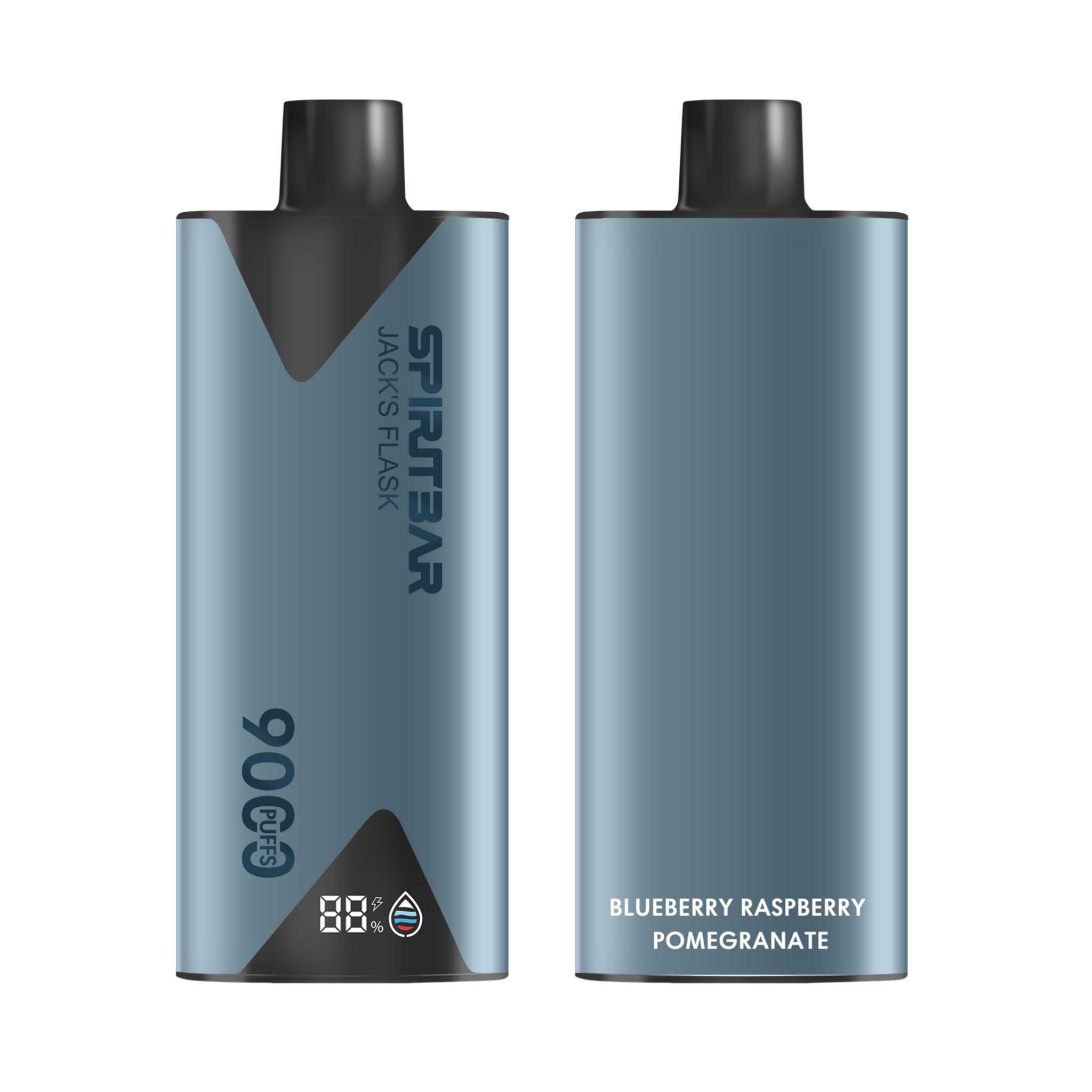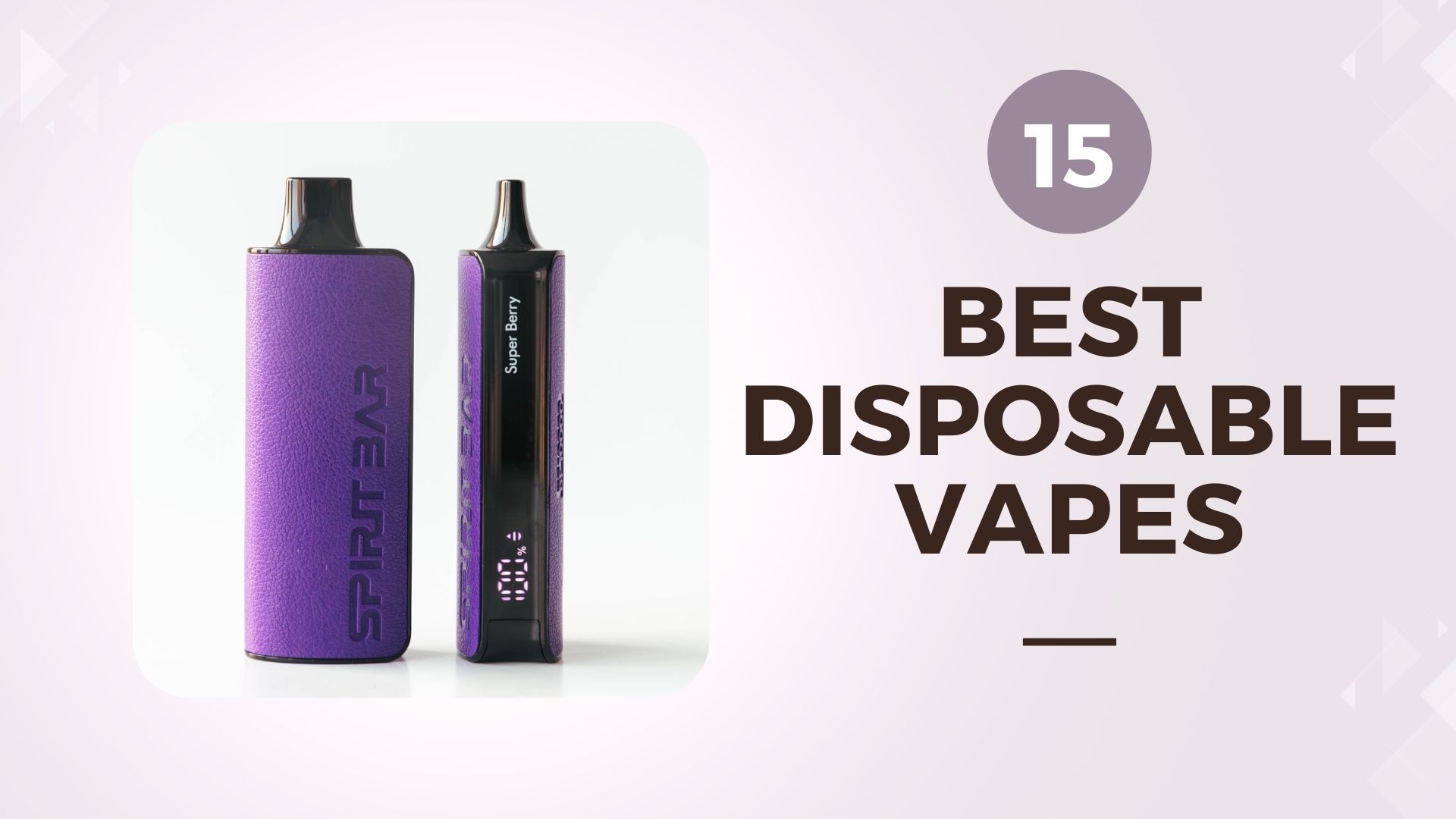It doesn’t feel like vaping has been around for that long, and there are still plenty of questions that people have about it. One of those questions is just how long does the vape stay in your system after inhaling it?
Well, the answer can depend on a wide number of different factors. Here we’ll take a close look at what they are, along with other crucial information you need to know about vaping. All you need to do is read on to find out more!
How Long Does the Vape Stay in Your System?
It is important to understand that the vapor itself does not remain in our systems, but rather the compounds that comprise the vapor. The amount of vapor and the way in which we consume the vapor dictates how much of the vapor compounds are retained in our systems.
Interestingly, these compounds can be detected in our skin, saliva, hair, and urine. We have provided more details on this for two of the most popular compounds found in vaping products: nicotine and cannabis. We’ll start by looking at how long nicotine stays in your system.
Nicotine and Cotinine
We have all heard about this infamous compound, but what exactly is it? Nicotine is a natural alkaloid (an organic compound with at least one nitrogen atom) that is typically derived from the nightshade plant family.
This compound is commonly used as a stimulant or to treat anxiety. So, what does this have to do with vaping? Well, nicotine is often included in the vape products that we consume. Ordinary cigarettes typically contain approximately 12 mg of nicotine, while vape products often contain less than that. However, only a small amount of the nicotine in cigarettes actually gets inhaled.
Cotinine is formed once nicotine enters your bloodstream. It is the predominant metabolite of nicotine, but it remains in your body longer than nicotine. Therefore, the amount of vape remaining in our systems is often measured using cotinine content as an estimation.
In rare instances, nicotine content will be measured. Both compounds are measured in nanograms per microliter (ng/mL). Cotinine levels in a regular vaper are between 10 to 500 ng/ml. This is largely dependent on vaping frequency and the nicotine content in the products being inhaled.
How Quickly Do We Feel the Effects of Nicotine?
$36 $12.99 (Free Shipping, 2-6 Days Delivery)
- Up to 10000 Puffs
- E-liquid & Power Screen Display
- Mesh Coil
- 2-6 days delivery
If you are a frequent vaper, you are probably doing it to feel the ‘calm’ that typically accompanies the consumption of nicotine. After inhaling vapor with nicotine, the nicotine enters our bloodstream and is detected by our brain within 20 seconds. After that, the nicotine is metabolized in our livers, lungs, and kidneys. The liver is the main site, as its primary function is to detox the body.
Nicotine or Cotinine Detection
People who do not vape and/or have not been exposed to second-hand smoke, usually have less than 1 mg/ml of cotinine detected in their urine.
In contrast, cotinine can be detected for up to three weeks in the urine of regular vapers. Cotinine detection can vary depending on the time period between the last exposure and the test. In regular vapers, a minimum of 30 mg/ml can still be detected two weeks after their last exposure.
As mentioned, nicotine does not last as long as cotinine in our systems. So, nicotine can only be detected in your blood for around three days since your last exposure, while cotinine can be detected for ten days since your last exposure.
False positives for the presence of nicotine are common during blood tests. This occurs because of a compound called thiocyanate. This compound is commonly found in food, e.g., cabbage, garlic, radishes, and almonds. High levels of thiocyanate can yield a false positive for nicotine.
Traces of nicotine and cotinine can be removed from your saliva within four days. In contrast, both compounds can be detected between three months and one year in hair follicles after the last exposure. Hair testing is relatively uncommon, as it is quite expensive.
Factors That Influence Nicotine or Cotinine Presence
Your age, the frequency of your vaping, and the medications that you take can all influence how long nicotine or cotinine is retained in your system. As we get older, our metabolism slows down. This means that we will metabolize nicotine or cotinine at a slower rate which will allow the compounds to persist in our systems for longer time periods.
Similarly, high vaping frequencies will make it more difficult to metabolize nicotine or cotinine. In contrast, the medication that we take can have differential effects on our metabolism. For example, hypertension medication may slow down our metabolism, while antibiotics may speed up our metabolism.
Interestingly, high levels of estrogen speed up the metabolism of nicotine. Pregnant women or women on hormone replacement therapy can remove nicotine faster from their bodies. Now, of course, pregnant women should not be consuming tobacco products during their gestational or nursing periods. However, it may reduce the impacts of second-hand smoke, which cannot always be avoided.
Fatty tissue promotes the storage of nicotine in our bodies. So generally, people with higher body fat compositions may retain nicotine for longer periods of time.
In contrast, however, a study conducted on mice revealed that nicotine stimulates the signaling pathway that converts brown fat into energy. Accordingly, many people have reported that they lose weight easily when smoking or vaping.
Your engagement in physical activity can also influence how long nicotine or cotinine may remain in your system. When we exercise, we typically excrete metabolic waste products through our sweat. So, the more you exercise, the quicker you can remove these compounds from your system.
How To Get Nicotine or Cotinine Out of Your System Quickly
Whether you regret vaping that one time or have an upcoming medical exam, there are many ways to speed up the metabolism of these compounds in your system.
Unfortunately, the main plan of action would be to quit vaping or smoking completely. If that is something that you cannot commit to, don’t fret! We have some more options for you.
You could start by drinking more water which will speed up the excretion process. A healthier diet, packed with antioxidants, can also help you metabolize nicotine more efficiently.
Examples of foods high in antioxidants include salmon, almonds, sunflower seeds, some fruits, and vegetables. Introducing these into your diet is a good idea anyway, but it can also speed up the body’s release of nicotine.
Another good idea is to get moving. Exercise is one of the best ways to speed up your metabolism and rid your body of metabolic waste. While these methods may not be ideal for a test you have tomorrow, they can help more effectively rid your body of nicotine.
What About Nicotine-Free Vaping?
Using nicotine-free products when vaping is thought to be a healthier alternative. It removes the risk of nicotine addiction or dependence. Traces of nicotine and cotinine will also not linger in your body. Unfortunately, it is never that simple, and vaping without nicotine carries its own risks.
Most of the chemicals that comprise vaping products are toxic to the human body. This includes propylene glycol and glycerol, which facilitates the production of compounds that release formaldehyde.
Formaldehyde is a naturally occurring organic compound used in a variety of chemical manufacturing processes. Prolonged exposure to formaldehyde may cause cancer in humans.
Other toxic chemicals that may be detected in your urine after vaping include acrylonitrile, acrolein, propylene oxide, propylene oxide, and crotonaldehyde.
The heating and inhalation of these chemicals can be toxic, but it’s important to note that they are found in incredibly small amounts. Nicotine-free vaping will only pose a small fraction of the risk that comes from smoking cigarettes.
Cannabis in Vaping
The primary purpose driving the invention of vaping was that it would be a healthier alternative to inhaling tobacco or cannabis. Many people opted for vaping because of the presumably lower health risks, but for those vaping cannabis, many of the health implications were similar.
Vaping cannabis has more implications than nicotine. In some countries, cannabis consumption is regulated or illegal, while nicotine consumption is legal, provided you are of the required age. It is therefore important to have an idea of how long the cannabis from vaping will remain in your system.
Much like nicotine, the detection period depends largely on the test sample (e.g., blood, saliva, or urine) that is used and the amount that you have consumed.
Small quantities of cannabis can remain in your system for a month, while for regular vapers, it can be detected for much longer. It is typically the THC (tetrahydrocannabinol) metabolite that remains in your system for long periods of time.
THC is one of the main psychoactive compounds found in cannabis. THC is often more concentrated in vape products, so the compound often lingers for longer. THC-COOH is a non-psychoactive compound that is formed after the consumption of THC. Just like cotinine, THC-COOH is the metabolite that the test detects.
Cannabis vapor can be detected in your urine for approximately one month since the last usage. This is slightly longer than the cotinine detection period. However, if you are an infrequent user, it can be detected anywhere from one to 21 days since your last usage.
Saliva testing detects cannabis for a shorter window than urine. Cannabis can be detected in your saliva from minutes to 72 hours after your last usage. Blood tests are less reliable and can detect cannabis anywhere from two hours after usage to seven days after usage.
Hair testing is uncommon, but they can detect cannabis for three months after usage. Hair growth is often slow, so a 1.5 cm segment of hair could produce a positive result.
How To Remove Cannabis Vapor from Your System
Just like nicotine and cotinine, there are many ways to speed up the removal of cannabis from your system. In contrast to nicotine, however, exercise is not the way to go. When THC is consumed, it binds to fat molecules.
These molecules are broken down during exercise for energy. The stored THC is then released in your blood and urine, therefore resulting in a positive cannabis test. A study found that just 35 minutes of exercise can increase the concentration of THC metabolites in your urine.
Viable options for effectively eliminating cannabis include detox drinks or detox kits. These products have been developed with cannabis detoxification in mind. They are most effective when used daily. However, the duration of their effects differs according to brand.
Some people also suggest consuming creatine supplements and activated charcoal products can also speed up the removal of cannabis from your system, but this has not been well researched. Please take precautions when buying products that promise the elimination of cannabis from your system. They may not have been tested and could potentially have dangerous ingredients.
Vaping and Our Health
Vaping is a relatively new concept, but nicotine and cannabis are not. All the health risks linked to those compounds can be experienced even if you are vaping them. Always monitor your body’s reaction before and after vaping to ensure that you are not endangering your health.
Despite vaping being a much lower risk than cigarettes, it is not entirely risk-free. Also, be aware that nicotine and cannabis are highly addictive substances that may pose a risk to both your physical and mental health.
It is especially important to purchase from well-known, reputable vape brands and avoid lesser-known companies. Some unknown brands cut corners and use untested e-liquids containing unknown ingredients in order to reduce costs. Even worse, they may falsely label nicotine content on their products.
These fly-by-night companies often skimp on safety testing and quality control. You never know what chemicals you could be inhaling when you vape their products. Their true nicotine levels are also suspect if they mislead about the contents.
That’s why I advise sticking with prominent, trustworthy vape manufacturers like SPIRITBAR Vape. These leading brands have too much to lose if they were to make false claims or endanger their customers. Reputable companies use high-grade lab-tested e-liquids and provide transparency about ingredients and nicotine content.
Prominent vape brands invest in R&D to formulate e-liquids with safety in mind first. They accurately label nicotine levels based on rigorous lab testing. While it may cost a few extra dollars per device, your health is worth purchasing from a brand you can trust.
Building on the convenience of disposable vaping, SPIRITBAR Vape has introduced innovative new options like the SPIRITBAR Jack’s Flask and SPIRITBAR Katana disposable vapes. Thanks to large e-liquid reservoirs, these products deliver an exceptional 9000-10000 puff capacity for extended vaping time. Helpful features include e-liquid and power display screens so vapers can monitor usage.
Despite the premium quality and performance, SPIRITBAR‘s disposables remain affordable. Jack’s Flask and Katana ship free when purchasing just one device. Vapers can enjoy bold pirate-inspired or refined samurai flavors for an accessible price.
$36 $12.99 (Free Shipping, 2-6 Days Delivery)
- Up to 9000 Puffs
- Stylish pirate flask-shaped metal body
- E-liquid & Power Screen Display
- 2-6 days delivery
Conclusion
It’s clear that there’s not one definitive answer on how long the compounds in vapes will stay in your system. You have to consider a multitude of factors, but the general rule is that the more you vape, the longer these compounds will remain in your system.
For common saliva tests, nicotine and cannabis will remain in your system for around three to four days. Blood tests will be around a week, while hair testing can show these compounds for many months.
If you need to take nicotine tests, then it’s a good idea to try switching to nicotine-free vaping if you don’t want to quit altogether. We hope now you have all the information you need!
Sharing is caring!
Related posts:
- How to Know if Your Vape Is Going to Explode? (5 Warning Signs)
- 7 Reasons Why Vape Pen Flashing Red When Charging (Solved!!!)
- Why Vape Pen Blinking 3 Times (Causes & Fixed!!!)
- 13 Reasons Why Your Vape So Harsh (Solved!!!)
- How to Vape Without Inhaling? (Techniques)
- 9 Easy Steps to Make Vape Juice at Home (with Tricks)
- How to Recharge a Disposable Vape? (Risks & Tips)
- How Long Does CBD Stay in Your System? (5 Factors)









